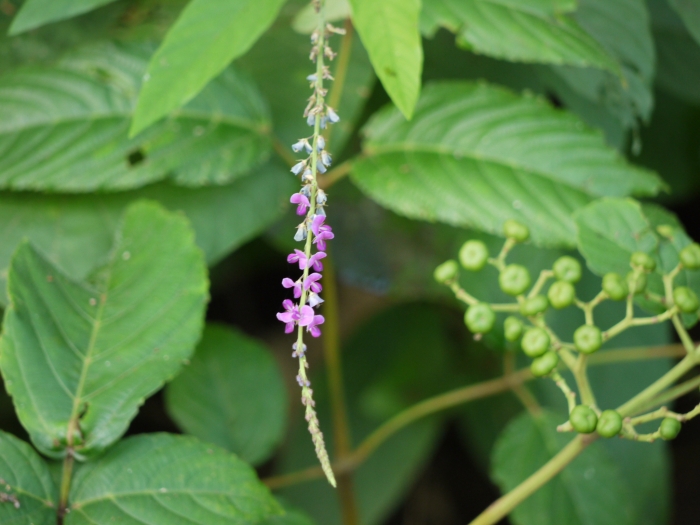Indian Jalap
(Pleurolobus gangeticus)
Indian Jalap (Pleurolobus gangeticus)
/
/

© Dinesh Valke
CC BY-SA 4.0
Image By:
© Dinesh Valke
Recorded By:
Copyright:
CC BY-SA 4.0
Copyright Notice:
Photo by: © Dinesh Valke | License Type: CC BY-SA 4.0 | License URL: http://creativecommons.org/licenses/by-sa/4.0/ | Uploader: dineshvalke | Publisher: iNaturalist |











Estimated Native Range
Summary
Pleurolobus gangeticus, commonly known as Indian Jalap, is a perennial vine native to tropical Asia, particularly in India and Bangladesh. It thrives in moist deciduous forests, often along riverbanks and in wet, swampy areas. This species is not widely known for its ornamental use but is primarily recognized for its medicinal properties. Indian Jalap can climb to various heights depending on the supporting structure, with a twining growth habit that allows it to cover large areas if left unchecked.
Indian Jalap is valued for its tuberous roots, which are harvested for use in traditional medicine, particularly as a purgative. The plant itself has a rather inconspicuous appearance, with small greenish-yellow flowers that are not particularly showy. It is rarely cultivated in gardens but may be of interest to those who practice herbal medicine or wish to preserve traditional plant uses. In terms of cultivation, it requires a moist, well-drained soil and can tolerate partial shade to full sun conditions. There are no popular garden cultivars, and the plant has no significant disease problems, although it may require management to prevent it from becoming too invasive in a garden setting.CC BY-SA 4.0
Indian Jalap is valued for its tuberous roots, which are harvested for use in traditional medicine, particularly as a purgative. The plant itself has a rather inconspicuous appearance, with small greenish-yellow flowers that are not particularly showy. It is rarely cultivated in gardens but may be of interest to those who practice herbal medicine or wish to preserve traditional plant uses. In terms of cultivation, it requires a moist, well-drained soil and can tolerate partial shade to full sun conditions. There are no popular garden cultivars, and the plant has no significant disease problems, although it may require management to prevent it from becoming too invasive in a garden setting.CC BY-SA 4.0
Plant Description
- Plant Type: Vine
- Height: 10-15 feet
- Width: 3-6 feet
- Growth Rate: Moderate
- Flower Color: White
- Flowering Season: Summer
- Leaf Retention: Deciduous
Growth Requirements
- Sun: Full Sun, Part Shade
- Water: Medium
- Drainage: Medium
Common Uses
Potted Plant
Natural Habitat
Moist deciduous forests, often along riverbanks and in wet, swampy areas
Other Names
Common Names:
Scientific Names: , Pleurolobus gangeticus, Aeschynomene gangetica, Aeschynomene maculata, Desmodium cavaleriei, Desmodium collinum, Desmodium gangeticum, Desmodium gangeticum subsp. maculatum, Desmodium gangeticum subsp. ramnagari, Desmodium gangeticum var. maculatum
GBIF Accepted Name: